

Enhancing the resilience of Swedish forests

A forest dominated by just a couple of species can be regarded as more vulnerable to pests and diseases than one with a wide variety of different trees. The team behind a Formasbacked project are investigating whether planting silver birch could enhance resilience and protect the future of sustainable forest production in Sweden, as Michelle Cleary explains.
The Swedish forestry sector is heavily dependent on spruce and pine, which together cover about 80 percent of the country’s productive forest land. These two species face serious problems however, which threaten the long-term health of Swedish forests. “We’re currently experiencing the biggest spruce bark beetle epidemic that we’ve ever seen in Sweden, millions of trees have died, and many places across Europe are facing similar challenges. We’re seeing more severe and frequent insect outbreaks as a result of climate change,” explains Michelle Cleary, an Associate Professor at the Southern Swedish Forest Research Centre at the Swedish University of Agricultural Sciences. There are also a variety of threats to the health of pine trees. “Several fungal diseases cause problems in pine, such as fungi causing root rot and foliar and stem diseases” continues Professor Cleary. “An over-reliance on pine and spruce trees, with the different health challenges that forests are facing, threatens the security of Swedish forests.”
Diversifying forests
This issue is central to Professor Cleary’s work in a research project backed by Formas, the Swedish government research council for sustainable development. The project team are looking into planting silver birch - which is already quite common in Sweden - as a way to diversify forests and enhance their resilience. “A less diverse forest is more vulnerable, given the current and future challenges that forests will face, particularly in the context of climate change and global trade which is leading to the introduction of sometimes damaging organisms. Diversifying forests is a means of spreading the risk and adding security to the forestry sector,” says Professor Cleary. While silver birch is fairly common in Sweden it hasn’t traditionally been managed intensively, whereas a lot of attention has been centered on pine and spruce. “Damaging agents such as root rot caused by Heterobasidion spp. have been researched extensively in Sweden and, in practice, attempts are made to control the disease to reduce economic losses,”
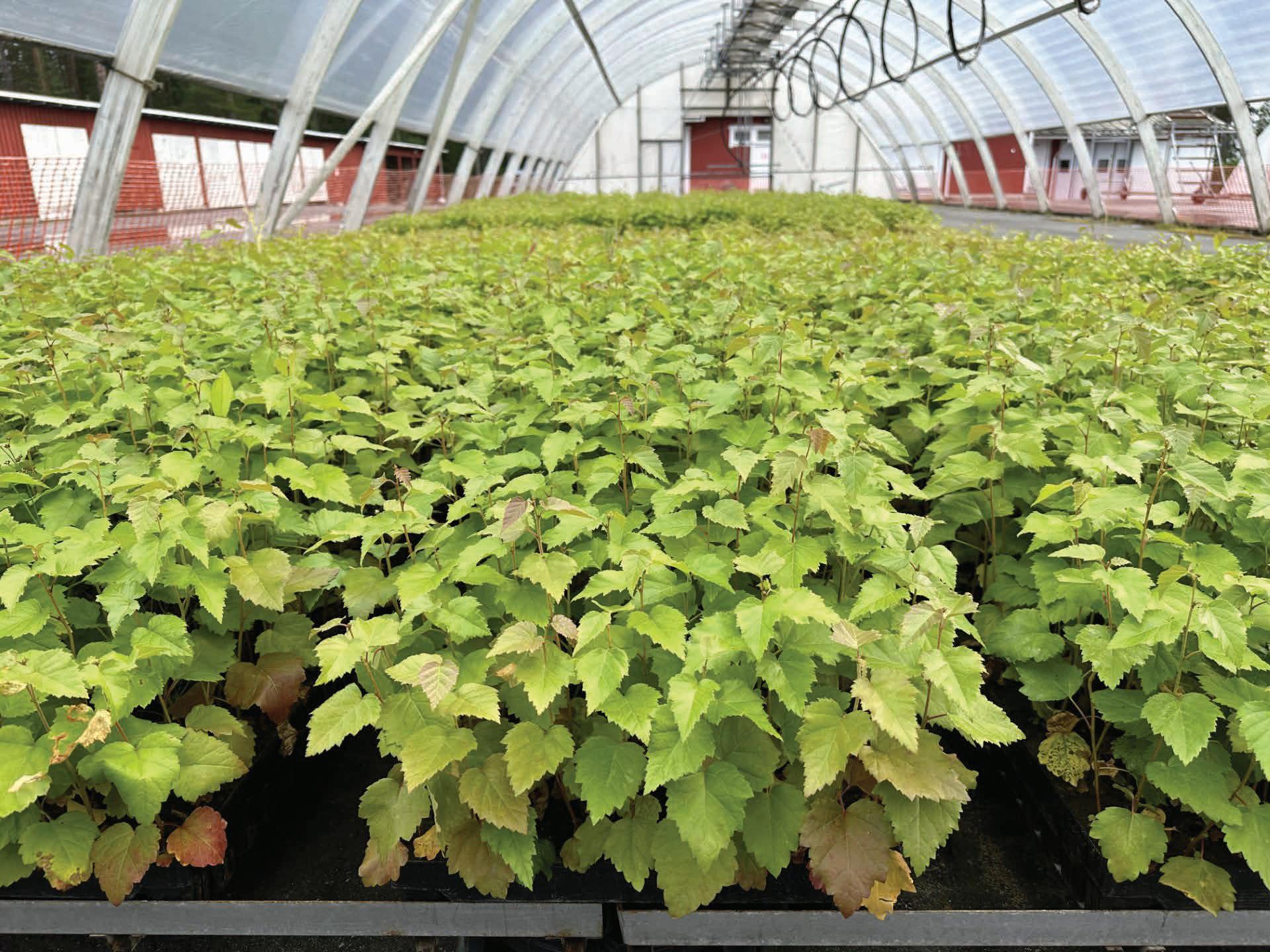
continues Professor Cleary.
A variety of thinnings may occur over the course of a rotation, and each time trees are harvested, freshly cut stumps can then be colonised by the Heterobasidion fungus. When Heterobasidion grows in stumps it can then grow down through the roots and infect neighbouring trees, which Professor Cleary says can be a serious problem. “It can cause significant decay in the timber, in particular spruce trees. So, in Sweden we treat the stumps at every thinning operation, as a protective measure. A biological control agent is sprayed on the stump, as soon as the tree is cut,” she explains. If more silver birch is to be planted in future, it will be important to assess its vulnerability to the Heterobasidion fungus, a topic that researchers are investigating in the project. “Do we anticipate that Heterobasidion will be a serious problem in silver birch, to a point where we would also need to also treat birch stumps with this biological control agent, at thinning?” outlines Professor Cleary.
The project team have conducted some field experiments where they have thinned out the silver birch, and looked at its susceptibility to infection by Heterobasidion.
This work has not yet concluded, but results so far suggest that Heterobasidian is not a major threat to silver birch, in large part because of the presence of another fungus inside the tree which seems to have inhibitory effects. “This seems to be very prevalent in silver birch trees. It doesn’t cause any disease, but it clearly comes into the tree at some point - maybe via an insect vector - and colonises the wood,” says Professor Cleary.
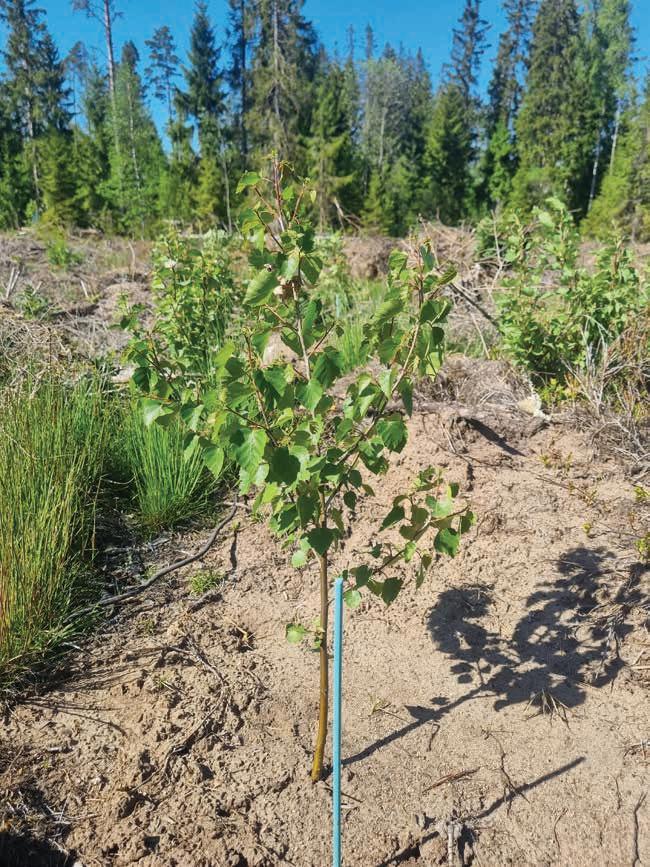
The importance of this fungus was not anticipated at the outset of the project, and the discovery of it has raised new questions, which Professor Cleary and her colleagues are also addressing in their work. “We’ve started some additional studies, looking at antagonistic effects. We’ve been growing the two fungi together to characterize their interactions,” she outlines.
This focus on silver birch has also brought other issues to prominence, one of which is the impact of pine weevil populations, which have recently been shown to attack newlyplanted birch. Seedlings are typically planted on clear-cuts, open areas within a forest created when trees are harvested, and pine weevils are attracted to the volatiles that are then emitted. “They can smell the stumps, and they essentially over-winter in the stumps of trees that were previously cut. When new trees are planted, weevils can then feed on those trees,” explains Professor Cleary. Pine and spruce seedlings are commonly treated with a protective coating to prevent seedling mortality, now Professor Cleary and her colleagues are looking at whether birch seedlings also require this protection. “Our early observations on young plantations showed a high percentage of the seedlings had been damaged by weevils, but lower than that which is typically seen in pine,” she outlines. “This could be an exceptional result though, so we need to study this further.”
Field experiments
A number of field experiments have been established, with researchers laying out traps, catching and identifying insects and assessing damage across the growing season, from around the end of April until September. This work involves getting down on the ground, and digging around the base of seedlings to assess the extent of any damage. “We did this pretty intensively over the course of a full growing season - on a weekly basis for the first few months, then maybe bi-weekly for the rest of the period. We were very concerned about catching the insects at the right time, so that we could identify them,” says Professor Cleary. “We have been looking to identify which weevil species are involved in causing damage to trees. There are four different weevil species that are damaging trees – two of them are actually causing mortal damage, by girdling the stems, while the two others are mostly chewing on leaves.”
The project team have conducted an experimental trial in which half of a group of silver birch trees were treated with mechanical protection and the other half
weren’t, from which researchers could then assess its effectiveness. Researchers have also probed other issues which may influence the vulnerability of trees to pine weevil populations, including their age. “We looked at a site which had been clear-cut a year prior, while a second site was a very fresh clear-cut. We wanted to see if there was an age difference, in terms of the level of weevil damage,” says Professor Cleary. This work has so far focused on a single site, but it’s unclear whether this is representative of weevil damage more broadly, so Professor Cleary plans to scale up this research in the future. “We’ve got financial backing to
establish a nationwide experimental series, in which we will be able to track weevil damage over one or two growing seasons, and see how variable it is,” she continues. This will also allow researchers to monitor the long-term impact of weevils on the quality of its growth rate, which is an important consideration in forestry. A tree that has been girdled by weevils may not necessarily be dead, so Professor Cleary says it’s important to continue with this research and make further observations. “It may well be that the stalks around the roots are still alive and the tree can resprout,” she explains. Browsing by moose, deer or other
“A less diverse forest is more vulnerable, given the current and future challenges that forests will face, particularly in the context of climate change. Diversifying forests is a means of spreading the risk and adding security to the forestry sector.”
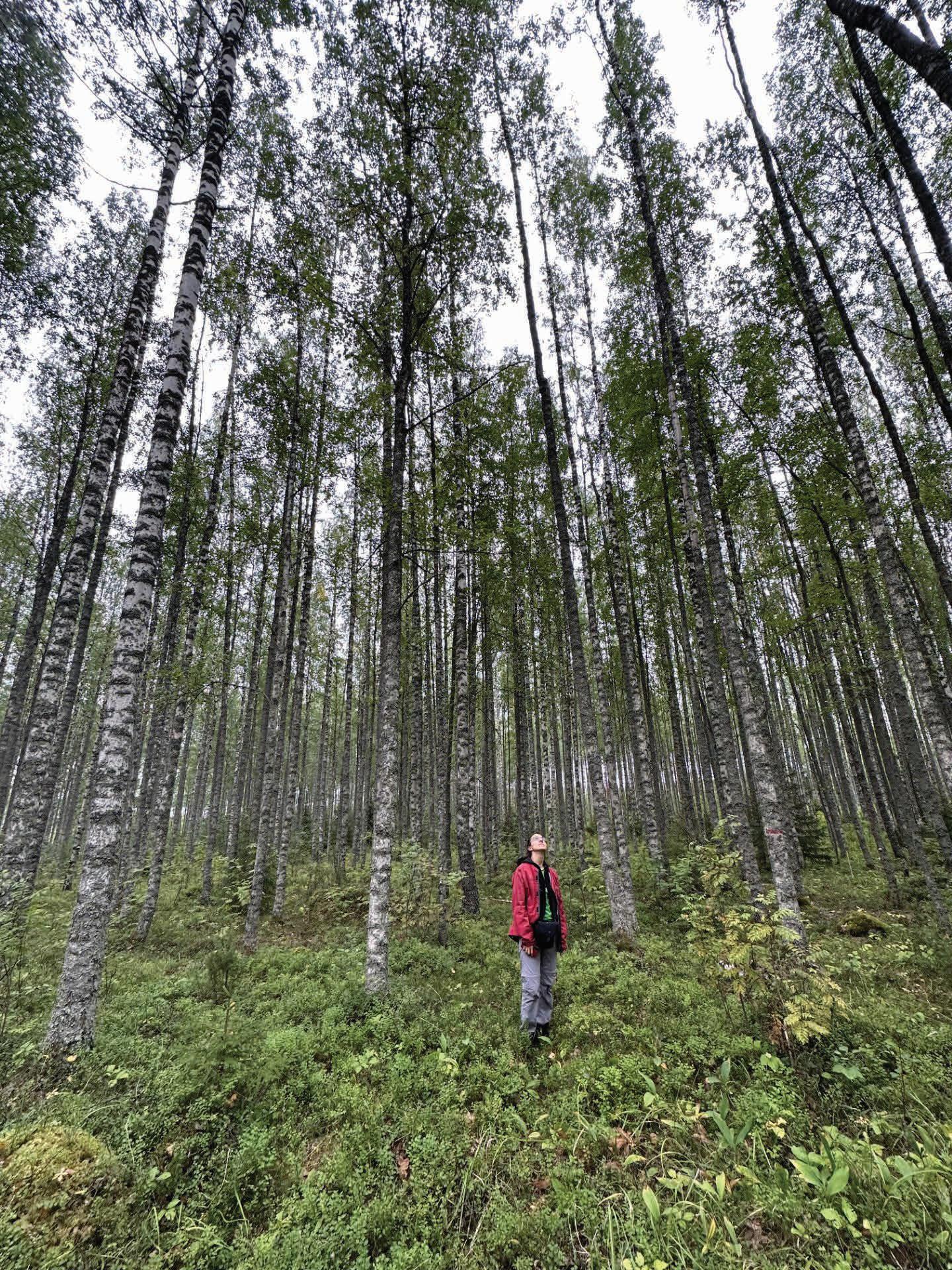

Photo credit Michelle Cleary
Photo credit Kinga Stolarek
Photo credit Michelle Cleary
Photo
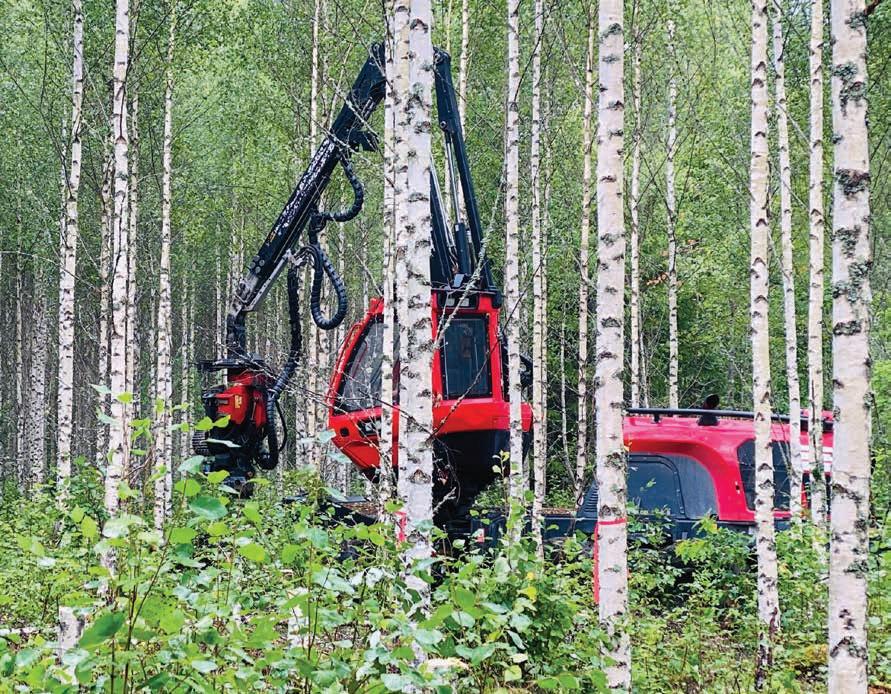

animals can also damage trees, and affect their growth patterns. “We’re working with trees that have been selected for their superior growth traits,” says Professor Cleary. “If trees have been really heavily browsed then they will sprout again, and when they resprout, from the base of the tree, they can come up not single-stemmed but multi-stemmed. This detracts from the initial goal of producing single-stemmed, fast-growing trees.”
The growth prospects of these trees are harmed by damage, with browsing in particular a major problem in Sweden. An assessment in September found quite substantial damage, and Professor Cleary plans to make further observations, to look at whether these trees are able to recover. “It may be that they can resprout and become single-stemmed trees, but we believe these first few years are really setting them back. The best way of preventing damage is fencing off newlyplanted areas, but many forest owners don’t like the idea. It’s very expensive and there are no subsidies available, so the forest owners bear all of the costs,” she explains. Alongside addressing these well-established threats, Professor Cleary and her team are also looking ahead and considering the problems which may emerge in future.
“Climate change is affecting host-pathogen, host-pest interactions for example, which may cause problems in future,” she says.
Alien invasive species
There is also a lot of concern over the possibility of alien invasive species arriving from overseas via the global trade in plants and plant products. One pest currently causing problems in North America is an insect called bronze birch borer, which causes decline and mortality in birch trees. “This
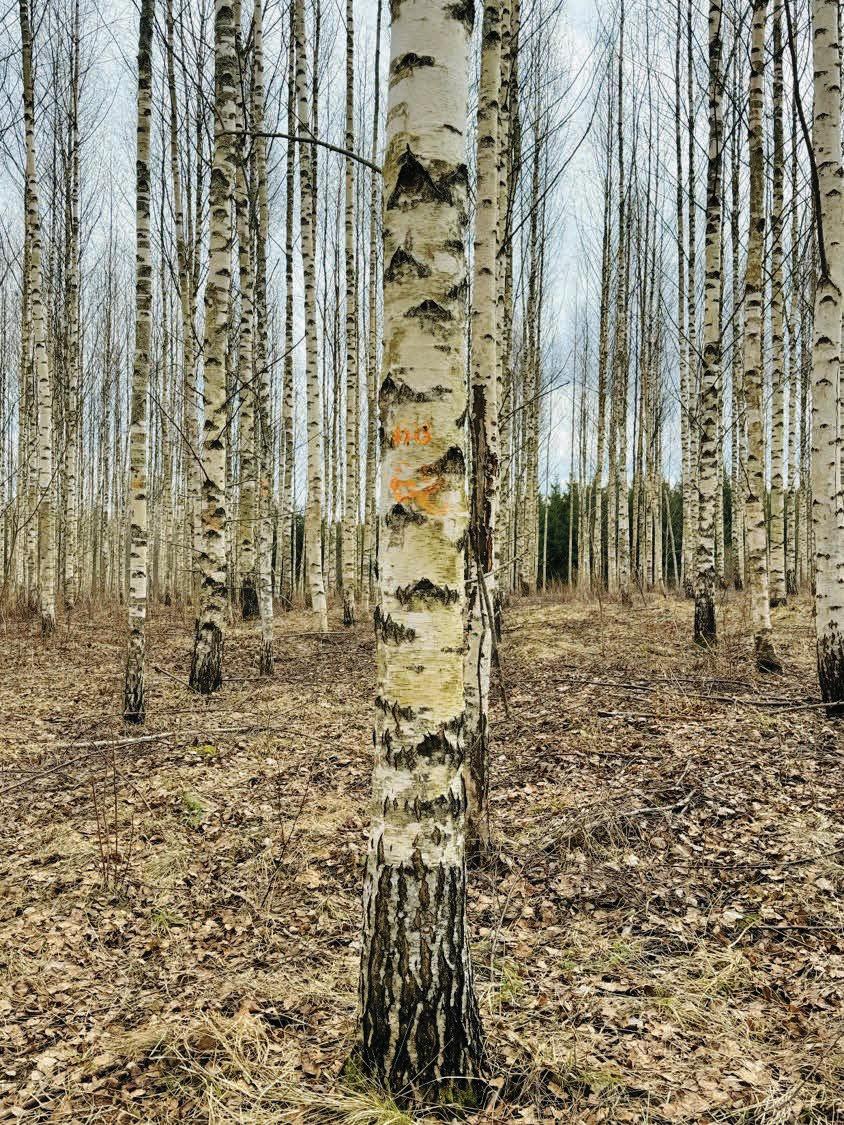
insect is typically a secondary pest of native birch species, it usually requires some sort of stress factor before it attacks trees,” outlines Professor Cleary. Field trials in North America have shown that European birch is highly vulnerable to bronze birch borer. “Another known pest is Emerald ash borer, which was introduced to North America from Asia. This has proven to be absolutely devastating - causing near extinction of several North American ash species,” says Professor Cleary.
“This pest is very similar in its lifecycle and its ecological strategies as bronze birch borer, and where you have this coevolutionary mismatch in host-pest associations, it would have serious effects on birch populations if it ever arrived in Europe.”
The presence of invasive species has in the past often not been detected early enough to implement eradication measures effectively, an issue that Professor Cleary is working to address. A molecular tool has been developed to rapidly detect bronze birch borer from environmental DNA (eDNA), for example in frass from the insect - its faeces. “The trade in wood products is one possible pathway in which we might find this insect. We can test the frass with this new tool, a rapid molecular assay, and detect bronze birch borer,” explains Professor Cleary. This assay has
been tested against the other Agrilus - the genus - species in Europe, to make sure it’s very specific in terms of identifying bronze birch borer, while Professor Cleary and colleagues have also been working to validate the tool. “If we want National Plant Protection Organisations (NPPOs) to use this tool, they have to know that it works on real samples, so it is important that we validate it,” she stresses.
which are shared with the different agencies in European countries,” says Professor Cleary. Pests like bronze birch borer don’t recognise national borders of course, and clear, efficient communication is crucial to detecting them early and then eradicating them. “It’s important for people to know what these pests look like, and to know who they should contact to report a problem and get it dealt with, ” continues Professor
“If we want National Plant Protection Organisations (NPPOs) to use this tool, they have to know that it works on real samples, so it is important that we validate it.”
This molecular tool has now been shown to work on wood samples, and Professor Cleary believes it will be highly valuable for NPPOs responsible for inspections at national points of entry. The tool has attracted a lot of interest from different NPPOs around Europe and the European and Mediterranean Plant Protection organisation (EPPO), which coordinates plant protection efforts across the continent. “EPPO will include this tool in their diagnostic protocols,
Cleary. “We’re trying to heighten awareness of these invasive pests.”
There is a strong applied focus to this work, with Professor Cleary and her colleagues responding to the needs of stakeholders, which will continue to be a prominent consideration in research. “A lot of our research is stakeholder-driven, and we will work to produce recommendations for forest owners on how to manage their stands,” she says.
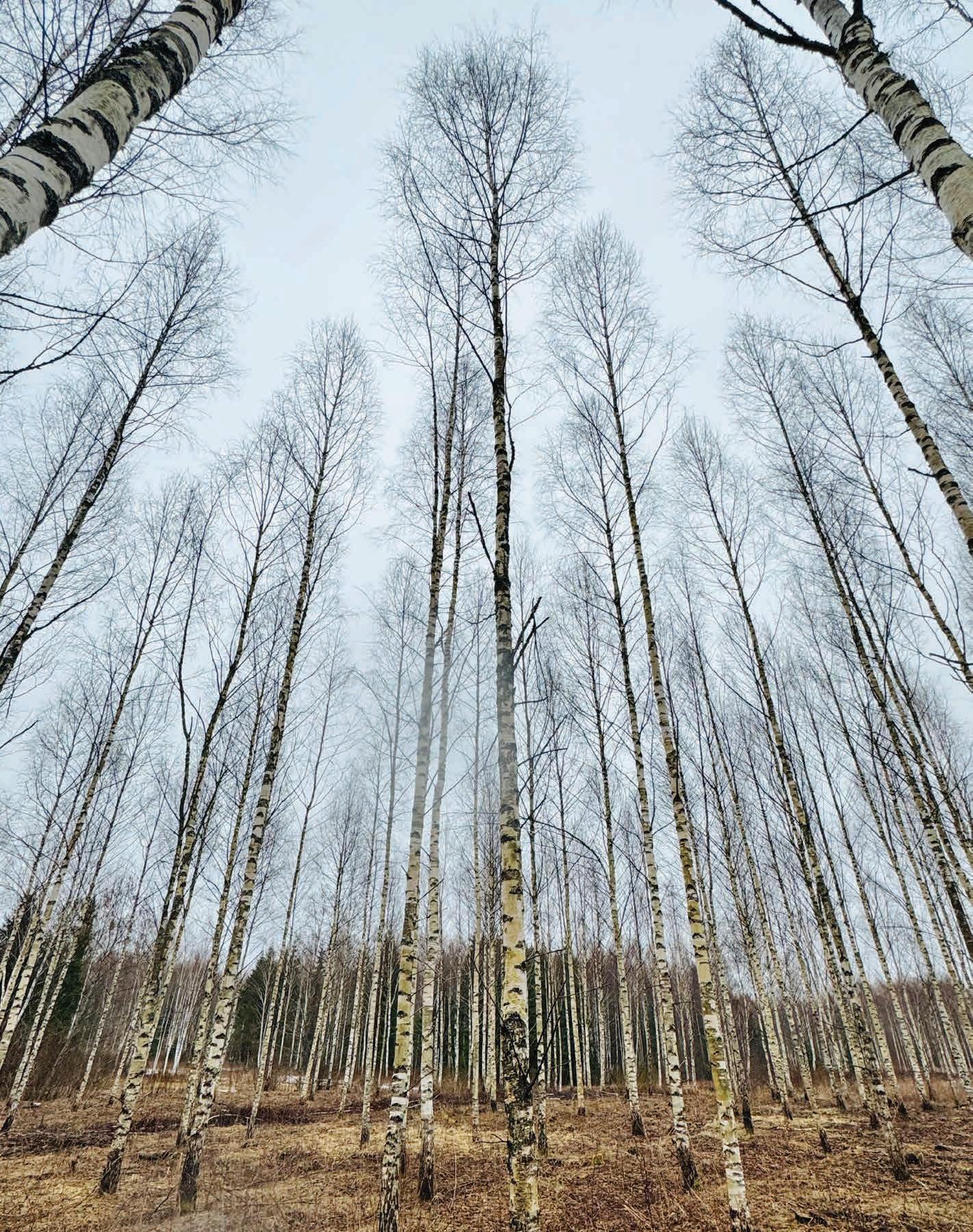
DIVERSIFICATION OF FORESTS WITH SILVER BIRCH TO SAFEGUARD RESILIENCE AND MULTIFUNCTIONAL ROLES OF FORESTS
Project Objectives
Norway spruce and Scots pine totally dominate Swedish forest production, but recent damage to these tree-species is jeopardizing future sustainable forest production. It is extremely important that the tree-species used in forestry is diversified. The project will set the base for a large introduction of planted silver birch in Swedish production forests. The project addresses important knowledge gaps around the management of silver birch.
Project Funding
This project is funded by the Swedish Research Council FORMAS under Agricultural and Veterinary SciencesAgriculture, Forestry and FisheriesForest Science 40104.
Co-investigators
• Renats Trubins • Urban Nilsson • Emma Holmström • Vilis Brukas • Karin Hjelm • Adam Felton
Contact Details
Project Coordinator, Michelle Cleary
Senior Lecturer at the Southern Swedish Forest Research Centre Inst för sydsvensk skogsvetenskap, Box 190 234 22 Lomma T: +46 40415181
E: michelle.cleary@slu.se W: https://www.slu.se/en/departments/ southern-swedish-forest-researchcentre/research/research-programmes/ diversification-key-to-resilient-andmultifunctional-forests/

is an Associate Professor and Senior Lecturer in Forest Pathology at the Swedish University of Agricultural Sciences. She also works as a Vice-Director for the Centre of Excellence Trees For Me which is developing competence focused on fast-growing broadleaf trees for sustainable forestry, materials and energy in Sweden.



Michelle Cleary
Michelle Cleary
Photo credit Babtunde Dosumu
Photo credit Babtunde Dosumu
Photo credit Michelle Cleary
